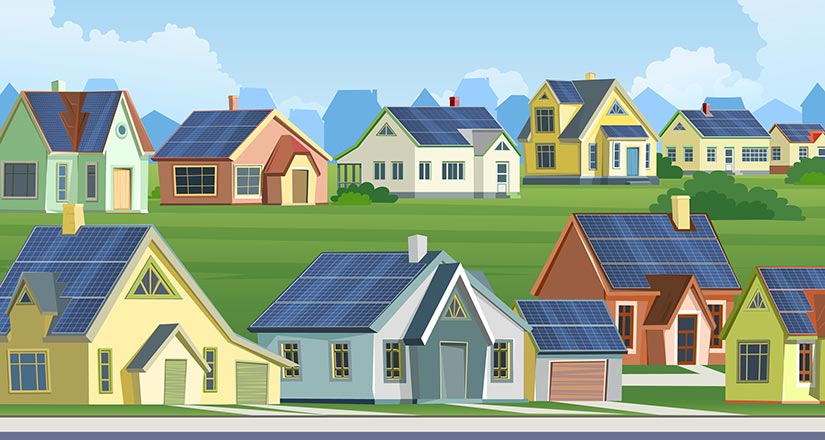
Sabri Ben-Achour wrote on Marketplace that grid operators are struggling with volume connection requests from renewables. The task of getting the solar projects that are underway connected to the electricity infrastructure is not easy, and the backlog in this process is a threat to the clean energy goals.
The reasons for the interconnection queue becoming a major barrier are:
- Volume. The number of solar project proposals has exploded and everyone wants permission to connect to the grid at the same time.
- Inefficiency. Continual back and forth with grid operators showing no streamlined process.
- Logistics. For example, building a solar plant far from a transmission line is going to be super expensive, or a wind farm next to a transmission line where the line can’t handle any more power.
National Renewable Energy Laboratory (NREL) wrote about building a solar-powered future.
- Photovoltaics (PV) and concentrating solar power are likely to continue to grow rapidly.
- Solar energy projects could provide 45% of the electricity in the United States by 2050.
- Technology costs are projected to continue to decline.
Key findings of the Solar Futures Study published by the U.S. Department of Energy on what could define the evolution of solar energy technologies:
- How solar energy technologies interact with other energy technologies – such as wind and storage
- Changes across the wider energy system
- Increased electrification of buildings and vehicles
- Emergence of clean fuels
- New commitments to both equitability and a more circular, sustainable economy
Three visions of the solar future are:
- Baseline case using current policies and trends
- A decarbonization scenario (the current electric power system is 95% decarbonized by 2035, and 100% by 2050)
- A decarbonization plus electrification scenario (the electric grid grows significantly in scale to power buildings, transportation, and industries)

Solar energy will integrate with buildings in two ways:
- how solar systems are deployed on the buildings
- how the buildings vary their use and storage of energy
According to NREL, today, only about 3% of solar viable rooftops in the United States actually host PV systems.
Kristen Hemingway Jaynes wrote on EcoWatch that Biden extended Trump-era tariffs on solar panel imports, with some exceptions including bifacial solar panels. Tariffs on imported solar cells and panels would be extended for another four years.
According to Bloomberg, most solar panels imported by the U.S. are from Malaysia, Thailand and Vietnam, which includes those made in factories owned by companies in China.
Associated Press wrote on The Journal Record that it’s time to end solar power trade war. With ambitious goals to reduce greenhouse gas emissions in half by 2030, the President has to restrain costs of wind, solar and other clean energy sources. The writer suggests that the President start to end the “long-running, ruinous trade war with China over the price of solar equipment,” and “reject calls to extend tariffs on solar products.”
Audrey Henderson wrote on the Wallpaper about midcentury solar homes being celebrated in House of Tomorrow show in Illinois.
“‘Houses of Tomorrow: Solar Homes from Keck to Today’, a new exhibit at the Elmhurst Art Museum in Elmhurst, Illinois, celebrates the House of Tomorrow and its solar innovations as a precursor to technologies and materials still in use today. The project, designed by George Fred Keck for the 1933 Century of Progress World’s Fair in Chicago, was decades ahead of its time. As well as featuring new-fangled gadgets, such as a dishwasher and an ‘iceless’ refrigerator, the House of Tomorrow also represented an early manifestation of harnessing solar energy.”

